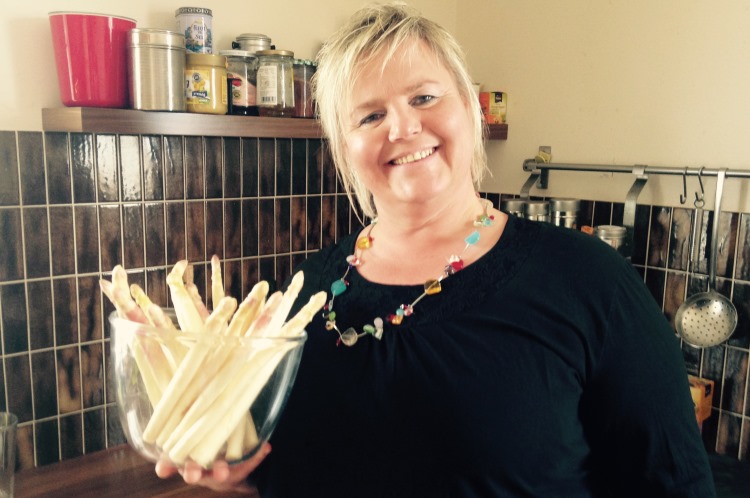We don’t mean Elvis, nor the royal home of the Whopper. We’re talking about the German king of vegetables now that it’s white asparagus season. Germans (and many Swiss and Austrian neighbors) are a jubilant bunch of eaters especially with the arrival of spargel—as the German’s call it—the ghostly-white stalk that heralds “spring is here!” It’s the first crop of the year to grace the dinner table, and after a long, gray winter this harbinger of summer elicits deep emotions in an otherwise stoic culture.
“Spargel is the essence of spring. It means winter is finally over and summer is around the corner,” says Susanna, my neighbor and 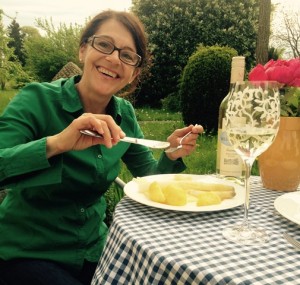 favorite spargel connoisseur. “Variations on spargel appear on menus everywhere, even in the senior home where I work. A favorite among the residents is my creamy white asparagus crepe, a specialty of Lake Constance.”
favorite spargel connoisseur. “Variations on spargel appear on menus everywhere, even in the senior home where I work. A favorite among the residents is my creamy white asparagus crepe, a specialty of Lake Constance.”
Spargel is ubiquitous around German and Swiss markets until June 24th. Then with the wave of a magic wand, the season officially ends with Prussian precision. Spargel’s short season is what makes it all the more coveted. And although residents of Lake Constance rarely display effusive emotion, for some reason, this shy vegetable sparks great passion. I would never turn down an invitation to eat Spargel at someone’s home—it’s an honor!
It may seem funny to Americans, many Lake Constance locals discuss the Spargelsaison like we debate sports. How far did you drive to buy your fresh Spargel ? I like to go to a local farm where the farmer even sings to his Spargel! Describing our passion for spargel to Americans isn’t easy as we’re mostly familiar with the green variety. But let’s try this metaphor: imagine a graceful, elegant ballerina. Muscular yet tender, she skims along the buttery surface of your plate. Her luminous and ephemeral beauty captures the imagination with every bite. How does this sweet, otherworldly flavor come out of a pile of dirt? It’s simply amazing! And her best dance partner is of course a fresh, young German Riesling or a Lake Constance Rosé. Encore!
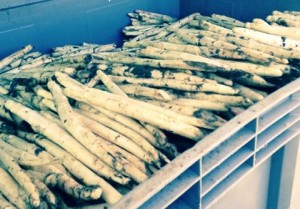 Although I live in Germany now and am therefore most familiar with the region's love of spargel, you will find this earthly delight throughout the Germanic world and even France, (where they’re reluctant to admit something so delicate and lovely could come from their easterly neighbors). It was the Romans’ refined taste for the green variety that originally brought the medicinal plant to the Barbarians. Centuries later, the Germans kicked it up a notch by developing a new agricultural technique for harvesting the precious whites. The only difference between the white and green is that the Weisser Spargel never sees the light of day. No sun. No chlorophyll. No green. And therein lies the flavor difference. The green has a nuttier, stronger, distinctly different flavor. They are like twins. The same, yet different.
Although I live in Germany now and am therefore most familiar with the region's love of spargel, you will find this earthly delight throughout the Germanic world and even France, (where they’re reluctant to admit something so delicate and lovely could come from their easterly neighbors). It was the Romans’ refined taste for the green variety that originally brought the medicinal plant to the Barbarians. Centuries later, the Germans kicked it up a notch by developing a new agricultural technique for harvesting the precious whites. The only difference between the white and green is that the Weisser Spargel never sees the light of day. No sun. No chlorophyll. No green. And therein lies the flavor difference. The green has a nuttier, stronger, distinctly different flavor. They are like twins. The same, yet different.
And why is the white much more expensive at 12 Euros per kilo? Because harvesting is 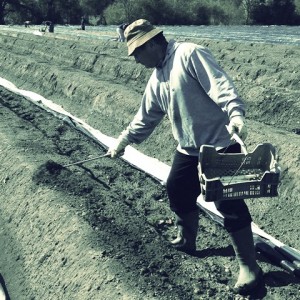 both time and labor intensive. Workers walk up and down the rows of high raised beds looking for surface cracks. Achtung! A crack means a shoot is ready to pop through the dirt which calls for action—schnell, schnell. A swift cut deep into the dark mound with the long trowel and the ivory prize goes into the basket.
both time and labor intensive. Workers walk up and down the rows of high raised beds looking for surface cracks. Achtung! A crack means a shoot is ready to pop through the dirt which calls for action—schnell, schnell. A swift cut deep into the dark mound with the long trowel and the ivory prize goes into the basket.
Spargel is good for you, without all that butter of course. It’s easily digestible, high in fiber, low in calories and a must-have in spring cleansing diets. It has been said to have aphrodisiacal properties, but more than that it’s a blood cleanser, diuretic and loaded with a motley crew of vitamins. It was also said to be the favorite vegetable of King Louis the 14th. If it’s good enough for a king, then it’s good enough for America. Enjoy the spring wherever you are. Your gourmet and co-op grocers in the U.S. should carry this German delicacy right about now. If you’re able to find it, I’d suggest taking a stab at this tasty recipe courtesy of another VBT Leader, Andreas.
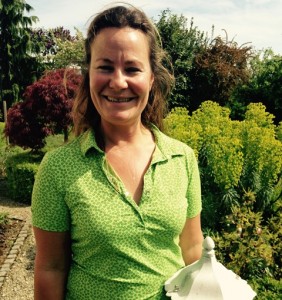 About the Author
About the Author
Kristin C. has been a VBT leader 13 years. Travelers can find her on our both our Heart of Europe Bike & Barge and our Lake Constance: Germany, Austria & Switzerland bike tour. She considers herself an 11th generation Vermonter whose 2nd home is Germany—where she loves the culture in her adopted home and never misses a dinner date if spargel is on the menu.
To learn how you can visit Germany and Switzerland with VBT, click here.
 VBT Bicycling Vacations
VBT Bicycling Vacations Country Walkers
Country Walkers
